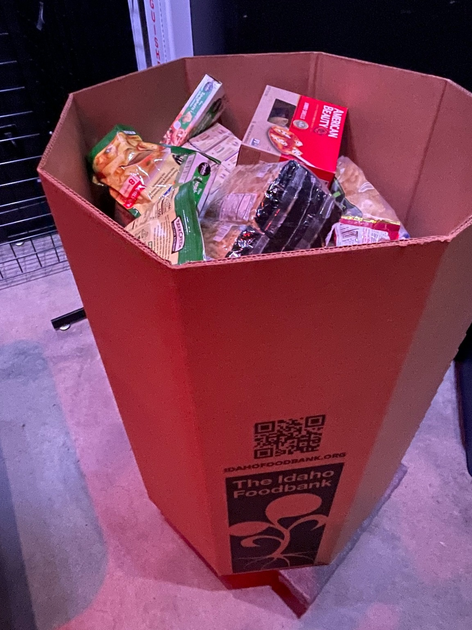Community Health & Engagement
A growing need: St. Luke’s, community partners working to address food insecurity

Chobani refrigerated truck being unloaded by St. Luke's Community Health and Engagement team members.
By Alexis BennettLast Updated November 25, 2025
Food insecurity is on the rise in Idaho and can be felt more acutely during the holidays when people are brought together to share meals and festivities.
According to recent data from Purdue’s Center for Food Demand Analysis and Sustainability, roughly 14% of U.S. households reported food insecurity this year. That’s up from 12.5% in 2024, an increase primarily due to continually high food costs and inflation. Recent disruptions to the Supplemental Nutrition Assistance Program benefits and the federal government shutdown have strained families further.
St. Luke’s and many of its food partners saw an increased need thus far in November as a result.
“In just the (first) two weeks, our partner pantries reported an increase in visits ranging from 25-50% and traffic to our online food locator has surged to six times its usual volume," said Morgan Wilson, chief development officer of the Idaho Foodbank.
Organizations like the Idaho Foodbank, which supplies local food pantries across the state, have stepped up to meet the moment and ensure that people have access to food. Among the Idaho Foodbanks efforts has been a refrigerator truck parked in front of St. Luke’s Magic Valley Medical Center.
The Hunger Coalition, Donnelly Foodbank and even the Mountain Home Air Force Base Officers’ Spouses’ Club have been hosting more frequent drives and distribution events to address the demand.

Idaho Food Bank collection bin.
Food insecurity’s impact on health
Even in the best of times, more than 12% of Idaho adults and 16% of Idaho children struggle with food security daily. Among the roughly 131,000 Idahoans enrolled in SNAP, more than 67% are in families with children, more than 43% are in working families and more than 38% are in families with someone disabled or is considered an older adult.
Food security is one of several conditions that has a significant impact on a person’s overall health. These factors, which include income, education, housing stability and access to transportation, are referred to as social drivers of health and shape a person’s ability to live a healthy life.
Individuals and families who struggle to afford or access nutritious food have higher rates of chronic disease, increased stress and lower overall well-being. Food-related stress can lead to higher rates of depression, anxiety and suicidal ideation for people of all ages. Children who go without food or have inadequate access to healthy foods often struggle in classroom settings, become truant and are more likely to drop out.
For health care providers like St. Luke’s, this can translate to higher utilization of services, more complex cases, higher cost of care and a failure to meet our mission to improve the health of people in the communities we serve.

Community Health and Engagement team members carrying food.
Programs to Address Food Need
Programs like SNAP go a long way to help Idahoans not only afford to eat, but to live. With additional funds to spend on groceries, paying for other essentials, such as rent or a mortgage, fuel to get to work or school and even simple hygiene products, is easier.
But SNAP is one lever and St. Luke’s aims to enhance access to nutritious foods to reduce hunger, support care plans and improve health in many ways. That includes bolstering community partners filling access gaps, including those for obtaining fruits and vegetables, and providing education through providers and community health centers.
Ultimately, addressing food insecurity isn’t just about providing groceries — it’s about tackling the root causes that make healthy food out of reach, whether that’s access or awareness. By connecting people to resources, such as nutrition programs, local food banks and social support services, communities can improve health outcomes for everyone.
If you or someone you know needs help accessing food this holiday season, or any time of year, use FindHelpIdaho.org to find local food resources, including pantries and meal distributors.